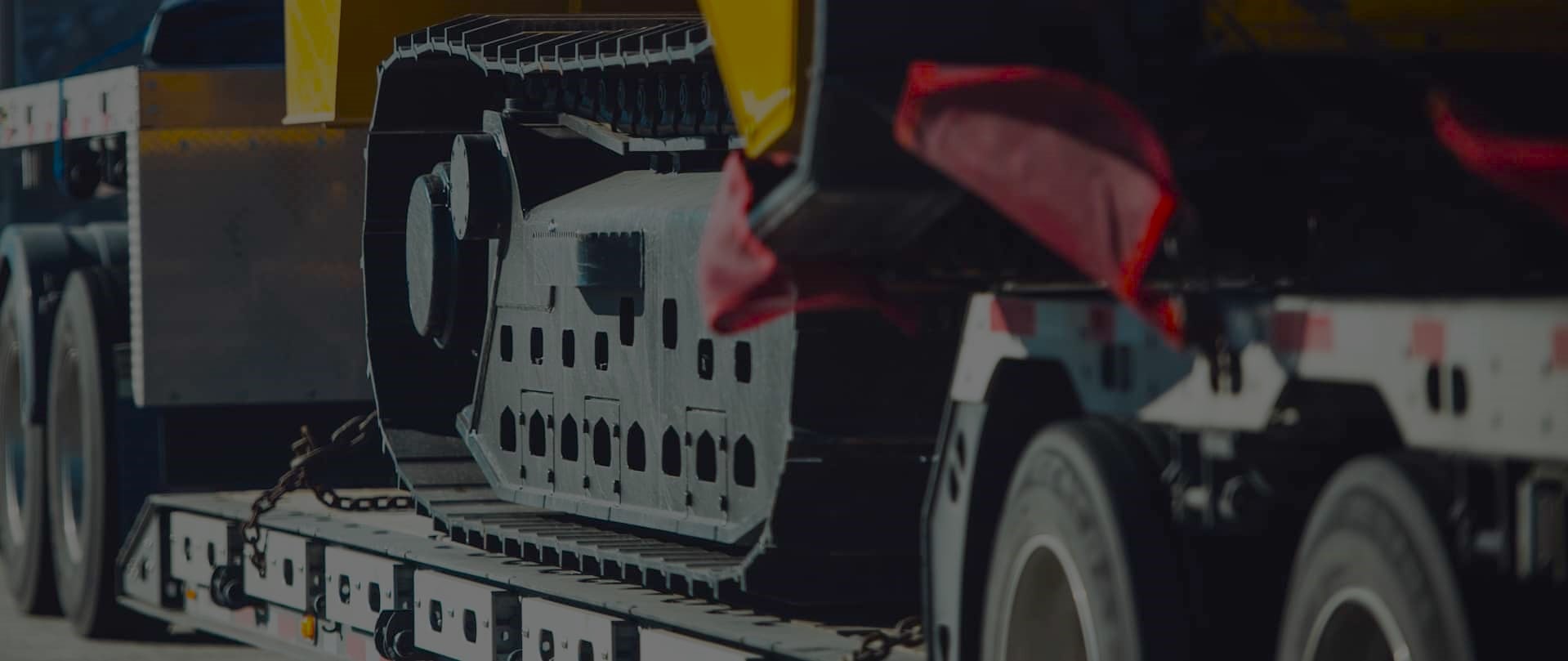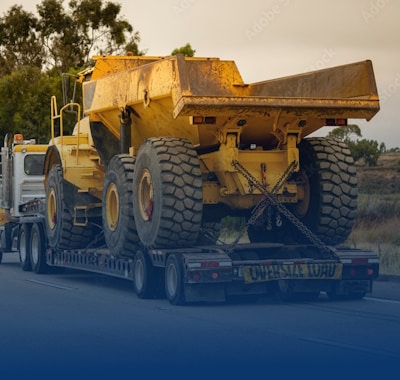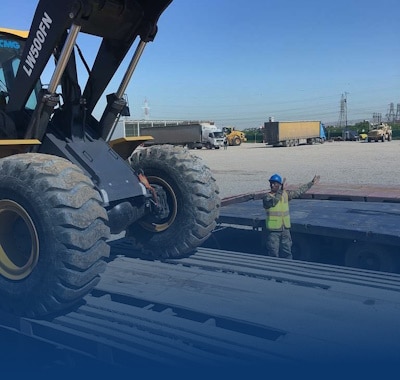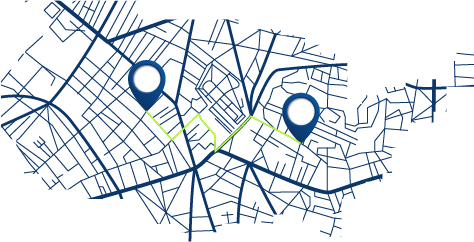How to Boost Transport Efficiency by Updating Your Equipment
Freedom Heavy Haul can offer expedited Pickup and Delivery for any size shipment anywhere in the USA. Contact us today for No Hassle, No Pressure Pricing.
In today’s fast-paced world, knowing how to improve transport efficiency is key. Updating your equipment is now a must, not just a choice. Studies show companies with new tech see up to a 25% boost in efficiency, the North American Transportation Association found.
We aim to help businesses improve their transport abilities. By updating your equipment, you’ll meet and beat market standards. This builds trust in our heavy hauling services.
Understanding Transport Efficiency
Transport efficiency is about managing logistics and transportation well. It aims to save costs and reduce waste. Companies that improve transport efficiency see big benefits. They get happier customers and lower costs.
These gains come from a good fleet management strategy. It makes the whole transportation process better.
Important metrics help check how well transport is working. They let businesses see how they’re doing. Key ones include how fast deliveries are, how much fuel is used, and how often equipment is used.
By using these metrics, companies can set goals for getting better. This leads to ongoing improvements in transport efficiency.
| Metric | Description | Importance |
|---|---|---|
| Delivery Time Accuracy | Measures the percentage of deliveries made on or before the promised date | Enhances customer satisfaction and trust |
| Fuel Consumption Efficiency | Tracks the amount of fuel used per distance traveled | Reduces operational costs and environmental impact |
| Equipment Utilization Rate | Assesses the percentage of time equipment is in active use | Identifies opportunities to maximize resources |
Using these metrics helps create a plan for better transport efficiency. Reliable data analysis helps refine the fleet management strategy. This leads to better use of resources and higher productivity.
Benefits of Upgrading Your Equipment
Upgrading your fleet technology boosts performance. New gear is more reliable, leading to fewer breakdowns. This means better schedules and happier customers.
New equipment also uses less fuel. Its design and engineering make it more efficient. This saves money in the long run, helping your business grow.
Upgrading also cuts down on maintenance costs. Modern equipment needs less upkeep. This lets your team focus on work, not repairs. Plus, it meets environmental rules easily.
Modern gear saves time too. It works faster and smarter. This means you can do more jobs, making more money.
| Benefit | Description | Impact on Fleet Efficiency |
|---|---|---|
| Increased Reliability | Fewer breakdowns and reduced downtime | Improved scheduling and customer satisfaction |
| Lower Fuel Consumption | Advanced engineering for optimized fuel use | Reduction in operating costs |
| Reduced Maintenance Costs | Fewer repairs needed with modern equipment | More focus on operational efficiency |
| Time Savings | Faster processing and operational systems | Enhanced delivery timelines and increased job capacity |
How to Update Your Equipment Fleet for Better Transport Efficiency
Updating our equipment fleet is key to better transport efficiency. We start by checking our current equipment and finding areas for improvement. This helps us plan upgrades that boost our operations.
Assessing Your Current Equipment
To update our equipment fleet, we first do a detailed check of what we have. This check isn’t just about counting vehicles and equipment. It also looks at how well they perform, like downtime and maintenance costs. This helps us see which equipment works best and which needs an upgrade.
Identifying Key Areas for Improvement
After checking our equipment, we look for areas to improve. Important factors include:
- Fleet utilization rates—how often each piece is used.
- Technological gaps that affect efficiency.
- Compliance with safety and reliability standards.
By focusing on these areas, we can make targeted upgrades. This not only makes our operations better but also helps our company grow in the transportation field.
| Equipment Type | Days in Operation | Maintenance Costs ($) | Utilization Rate (%) |
|---|---|---|---|
| Truck A | 200 | 5,000 | 85 |
| Excavator B | 150 | 7,500 | 60 |
| Crane C | 180 | 3,000 | 90 |
| Loader D | 100 | 8,000 | 40 |
Modernizing Equipment Fleet with Advanced Technologies
Advanced technologies are key to making equipment fleets better. They help improve how things work in many areas. Telematics systems give us real-time data, helping us make smarter choices.
Using GPS is a big step forward. It helps us find the best routes, saving fuel and money. It also makes deliveries faster and customers happier. For more on making transport better, see this resource.
Going electric or hybrid is another smart move. It cuts down on pollution and saves money over time. This way, we can be green and still be productive.
| Technology | Benefits | Impact on Costs |
|---|---|---|
| Telematics | Real-time monitoring and data analysis | Lower operational costs through better resource management |
| GPS Systems | Route optimization and fuel efficiency | Reduced fuel costs and improved delivery speed |
| Electric/Hybrid Vehicles | Environmentally friendly and reduced emissions | Long-term savings on fuel and maintenance |
By using new tech, we’re setting up a strong future. We’ll see better efficiency and safety in moving heavy equipment. Every step we take makes us more competitive.
Strategies for Fleet Management Optimization
A good fleet management strategy is key to better transport efficiency. A key part of this is the fleet audit. It gives us deep insights into how we operate. By checking equipment, costs, and how we use resources, we find ways to do better.
Implementing a Comprehensive Fleet Audit
To make our fleet management better, we need a detailed audit. This audit has important steps:
- Evaluate Equipment Performance: Keep an eye on how well our machines and vehicles work. We track uptime, maintenance, and how often they’re used. This helps us spot which ones need work.
- Analyze Operational Costs: Look at the costs of fuel, maintenance, and repairs. Knowing these numbers helps us find ways to save money.
- Assess Resource Allocation: Check how we use our resources across the fleet. Making sure the right equipment is in the right place boosts productivity.
- Gather Feedback from Operators: Talk to the people who use the equipment every day. Their feedback can show us problems we might not see from just looking at numbers.
- Implement Findings: After we’ve looked at the data, we can make our fleet management plan better. Making these changes can really improve how we manage costs and serve our customers.
By focusing on these areas, businesses can make their fleet management stronger. A good audit not only helps now but also guides future investments. For more on improving logistics, check out this resource.
| Audit Step | Description | Benefits |
|---|---|---|
| Evaluate Equipment Performance | Monitor machinery and vehicle efficiency metrics. | Identifies underperformers for targeted improvement. |
| Analyze Operational Costs | Break down fuel, maintenance, and repair expenses. | Highlights areas for potential cost reduction. |
| Assess Resource Allocation | Review deployment of equipment across operations. | Maximizes productivity and reduces idle resources. |
| Gather Feedback from Operators | Engage front-line staff for operational insights. | Reveals practical challenges affecting performance. |
| Implement Findings | Refine strategies based on audit outcomes. | Enhances service delivery and cost management. |
Maximizing Transport Operations through Innovative Equipment
Investing in new equipment is key to better transport operations. By using the latest machinery, we can speed up delivery times and improve service quality. This also makes our operations more flexible, helping us meet client needs quickly.
Innovation is more than a trend; it’s essential for staying ahead in logistics. Using the latest equipment helps us achieve our business goals and benefit our clients. Every upgrade, from tracking systems to better vehicles, helps us work more efficiently.
By focusing on new equipment, we make our processes smoother. This cuts down on delays and costs. For big projects, the right equipment is crucial. Specialized services for oversized cargo ensure safe and timely deliveries. For more information, check out heavy equipment shipping services that focus on these areas.
| Type of Equipment | Impact on Operations | Benefits |
|---|---|---|
| Advanced Tracking Systems | Increased visibility | Improved routing and ETA accuracy |
| Fuel-Efficient Vehicles | Reduced fuel consumption | Lower operational costs |
| Automated Loading Solutions | Faster loading times | Enhanced safety and productivity |
| Telematics Systems | Real-time data access | Better decision-making capabilities |
By adopting new equipment, we not only meet client needs but also help the environment. We reduce carbon emissions from transport. As we invest in new solutions, we become more than just a service provider. We become a key partner in our clients’ success.
Vehicle Fleet Optimization Techniques
In today’s fast-changing transportation world, using real-time data analytics is a big step forward. It helps businesses make their vehicle fleets better. With advanced analytics tools, we turn data into useful insights that boost fleet performance. This way, we can make choices that focus on reliability and efficiency in our transport services.
Leveraging Real-time Data Analytics
Real-time data analytics opens up many chances to improve fleet efficiency. By watching and analyzing fleet activities all the time, we spot trends and oddities. These tell us a lot about how well we’re doing.
Here are some key areas where this approach really helps:
- Predictive Maintenance: By looking at vehicle data, we can guess when something might break down. This way, we can fix things before they stop working, saving time and keeping things running smoothly.
- Route Optimization: With real-time traffic info, we can change routes quickly. This means we get things delivered on time and use less fuel.
- Driver Performance Improvement: By checking how drivers act, we can create training plans just for them. This leads to safer and more efficient driving.
With these insights, we can set up specific plans to make our fleets even better. Data analytics helps us improve right away and also helps us keep getting better. Using these methods is key to staying ahead in the heavy equipment transport business today.
Improving Fleet Efficiency with Smart Technology
Smart technology is key to making fleets more efficient. It offers tools that update how we work. With IoT devices, we can track vehicles and loads in real-time. This means we can plan the best routes and make sure deliveries are on time.
This tech cuts down on delays and makes managing logistics better. AI helps predict problems like delays or equipment failures. This way, we can get ahead of issues before they happen.
Using these advanced tools makes operations smoother and boosts customer happiness. It keeps our heavy equipment transport services reliable and trustworthy. By focusing on things like pre-transport checks and safe loading, we make our transport better.
For tips on keeping equipment safe during transport, check out this guide.
Investing in these tools shows we care about doing things right. It helps us meet customer needs better. Using smart tech in fleet management encourages us to always get better. It makes our business more efficient and competitive.
Training Staff for Enhanced Transport Performance
Investing in staff training is key to better transport performance. Programs that improve safety and equipment use boost skills and commitment. This leads to better overall operations and efficiency.
Creating a Culture of Continuous Improvement
Building a culture of continuous improvement motivates staff. It encourages them to find new solutions and learn more. To do this, companies can:
- Provide regular training on safety and best practices.
- Start mentorship programs for new and experienced staff.
- Set up feedback systems for employee insights and ideas.
- Give rewards for efforts that improve transport performance.
- Use technology for learning, like online courses and virtual workshops.
This approach helps companies reach their full potential. It leads to big improvements in transport efficiency.
Measuring Success: KPIs for Transport Efficiency
To understand the impact of upgrades and changes, we need to look at key performance indicators (KPIs for transport efficiency). These metrics show how our fleet is doing and where we can get better. Important KPIs are fuel efficiency, delivery times, and maintenance costs.
Fuel efficiency saves money and shows we care about the environment. Checking delivery times helps us see if we’re reliable. And, looking at maintenance costs helps us keep our fleet running smoothly for a long time.
By tracking these KPIs, we can make smart choices about how to manage our fleet. This helps us keep improving and shows we’re committed to excellent service. It also builds trust and safety with our customers.







